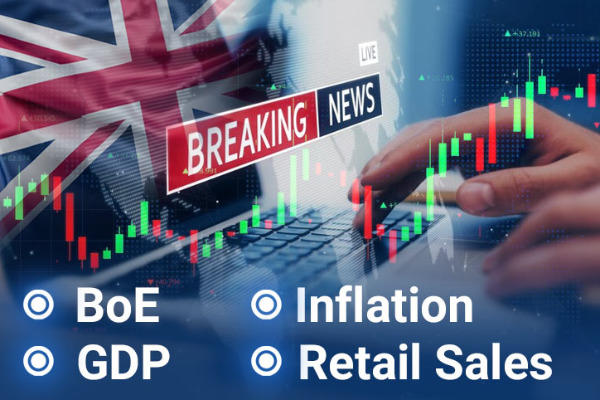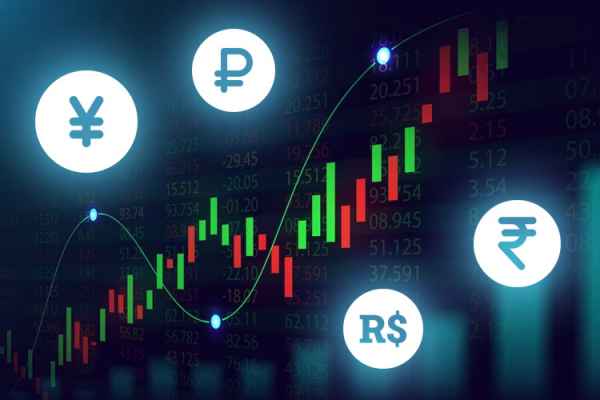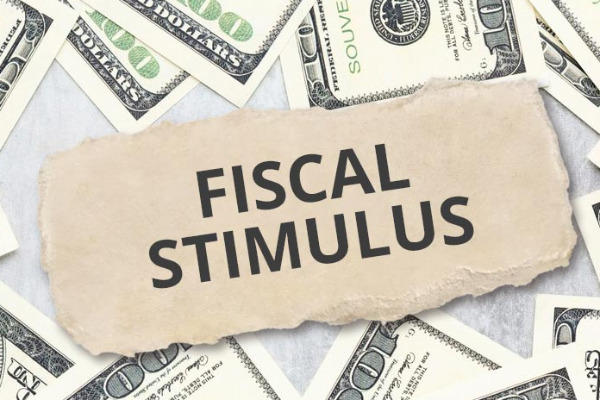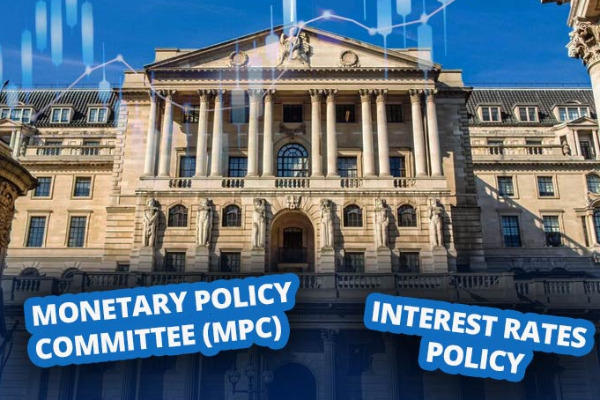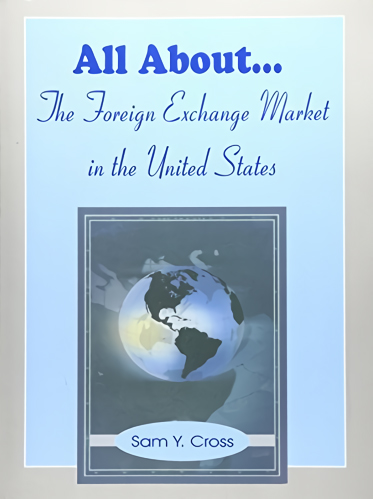As the most widely traded currency pair in the world, it's no wonder that most beginners learn to trade with EUR/USD. However, have you known about these EUR/USD facts?
Looking at forex trading statistics in this day and age, the US Dollar vs. Euro has become the most popular currency pair in the world based on its fantastic trading volume. Its popularity is so high that people forget that less than two decades ago, the EUR/USD pair didn't even exist.
That's not the only interesting fact surrounding the pair. If you favor EUR/USD for your trades, let's get to know other EUR/USD facts that are related to its history, central bank actions, volatility, and the designated market session.
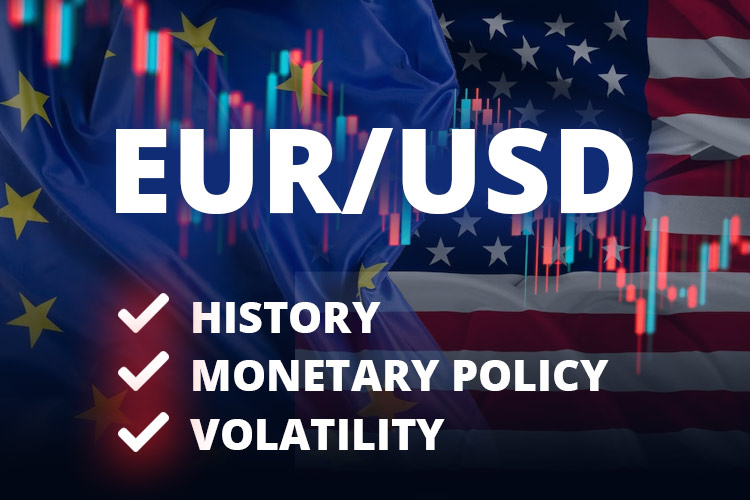
1. History and Rivalry with the US Dollar
The history of forex trading in the 90s seems to be the most important timeline for the EUR/USD. At that time, the forex pairs available were very different from today. For example, the German Mark vs. the US Dollar was the biggest pair in the 90s, followed by the French Franc vs. the US Dollar.
At the end of the 90s, exactly on January 1, 1999, history changed because that was when the Euro was introduced as a single currency. The journey of the Euro actually began way earlier when the Euro was still in the form of an internal accounting unit for members of the European Community (EC).
There were two forms of the Euro at that time, a European accounting unit and a European currency unit (ECU). However, both were not actual currencies. Instead, both forms of "currency" were like a basket of several EC currencies designed to help stabilize the European exchange rate. That is why they did not change the forex history like when the Euro currency was introduced. Nonetheless, ECU paved the way for the single Euro currency, as the value of one Euro was equal to one ECU on January 1, 1999.
The original exchange rate of the Euro vs. the US Dollar at that time was 1.1686. Although the Euro did not become a physical currency until 2002, the Euro launch already bounded the Eurozone currencies collectively. In other words, the French Franc, German Deutsche Mark, Spanish Peseta, Italian Lira, and other Eurozone countries no longer had separate exchange rates.
The Euro at the beginning of its emergence was known as a rival to the US Dollar. The existence of the Euro was seen as a threat to the US Dollar's unofficial position as the world's reserve currency. Although it could happen, the US Dollar still holds the title with a significant gap to this day.
2. Monetary Policy Divergence
Short-term fluctuations of EUR/USD are influenced by many factors, but its long-term performance is mostly affected by fundamental aspects.
The two fundamental factors with the most significant influence on the exchange rate of EUR/USD throughout history are:
- Monetary policy from each central bank (The Fed and ECB).
- Economic fundamentals of the US and the Eurozone.
These two factors are closely related. The shorter the time frame, the more focused it is on speculation. Therefore, expectations of central bank monetary policy also have a significant impact.
Let's take a look back at the movement of EUR/USD during the global financial crisis of 2007. At that time, the economy was under pressure and central banks were forced to unite in loosening their monetary policies. However, what happened was that their responses were not uniform.
Monetary policy divergence between the Federal Reserve (the Fed) and the European Central Bank (ECB) was especially prominent. The Fed took aggressive steps to stimulate the US economy with three different quantitative easing (QE) tranches. In contrast, the ECB refused to implement QE for a long duration. When government bond purchases were finally taken, the ECB's progress lagged behind the Fed for several years.
This policy difference is based on the focus of the two central banks in implementing monetary policy. The Fed has a dual mandate, which is to stabilize prices and increase job creation, while the ECB only has one goal, which is price stability.
This difference ultimately had some interesting effects on the EUR/USD exchange rate. Even for a long time, the most important EUR/USD news tended to be related to the Fed's policy.
In addition, the Euro also carries the burden of the debt crisis of some of its member countries. This arises from the uniform monetary policy nature of the common currency in the member countries. The fact is, uniform actions for different countries with special needs are not a good idea. Such a fundamental problem has led some parties to question the future of the Euro as a single currency.
3. Strong Correlation with Central Bank Policies
The dynamics of the EUR/USD price movement have been quite varied. The following is a summary of EUR/USD and its relation to central bank policies since 2007:
- September 18, 2007 - The Fed cut interest rates by 50 basis points; EUR/USD strengthened.
- December 16, 2008 - The Fed cut interest rates close to zero; EUR/USD strengthened.
- October 19, 2009 - Greece revised its deficit forecast from 6.7 percent of GDP to 12.7 percent of GDP; EUR/USD weakened.
- June 1, 2011 - Moody's downgraded Greece's debt rating to junk; EUR/USD weakened.
- December 18, 2013 - The Fed announced that tapering would begin in January 2014; EUR/USD weakened until February 2014.
- July 14, 2014 - ECB President Mario Draghi prepared the market for QE by stating "falls squarely in our mandate"; EUR/USD weakened.
- January 22, 2015 - The ECB introduced "full-blown QE"; EUR/USD weakened.
- December 13, 2015 - The Fed raised interest rates for the first time in a decade; EUR/USD strengthened.
- November 8, 2016 - Donald Trump won the US presidential election; EUR/USD weakened.
- October 26, 2017 - The ECB divided its bond purchase program worth EUR60 billion; EUR/USD strengthened.
- December 13, 2018 - The ECB ended the EUR2.5 trillion stimulus program; EUR/USD weakened.
- July 25, 2019 - Mario Draghi geared toward rate cuts as growth slowed; EUR/USD weakened.
From the historical data above, it appears that central bank policies dominate the movement of the EUR/USD. It can be said that the more accurate your prediction of the Fed's actions, the easier it is to predict the movement of the EUR/USD pair.
4. Most Ideal Volatility
The EUR/USD pair is well-known for its high volatility. To this day, the EUR/USD remains the most volatile pair in forex history. This fact has attracted the attention of many traders in the market.
As the single currency of several countries, the Euro is greatly influenced by the political and economic developments of these countries. In just one day, there are many different data releases from its 16 member countries.
On the other hand, news throughout the day related to the US economy and its major trading partners will also affect the value of the Dollar. Thus, it is clear that there are many opportunities to take advantage of the EUR/USD, even with small price movements.
For example, a small change of 1 pip in the EUR/USD can result in significant profit or loss. In standard trading lots, 1 pip equals $10. But if you want to play it safe, you could use mini lots with a value of $1 for each pip.
However, it is still important to have effective strategies in place to minimize the risk of losses when trading the EUR/USD. It is also crucial to implement money management to maintain a good ratio of profits and losses.
5. Highly Favored during Overlap Sessions
In addition to the above factors, timing also plays an important role in trading the EUR/USD. The forex market is open 24 hours a day for 5 days. However, trading opportunities are not the same all the time.
In general, the forex market is divided into 3 sessions: London, New York, and Australasia. Some also divide it into 4 sessions by separating Australasia into the Sydney and Tokyo sessions. Some sessions are often combined due to the overlap that occurs during their operational hours.
For example, the overlap session of London and New York is a favorite time for short-term traders. This is because major pairs involving the Euro, US Dollar, Pound, and others are experiencing significant range increases during this session.
If you are using a news trading strategy, the best time to trade the EUR/USD is during the London and New York sessions. But if you want to apply breakout trading, then you can take advantage of the rapid movements at the beginning of the London session. Different systems have different trading times.

 Dedicated FREE FOREX VPS
Dedicated FREE FOREX VPS Free FOREX Virtual Private Server
Free FOREX Virtual Private Server MT4 Demo Contest, Get $500
MT4 Demo Contest, Get $500 Sign Up for an Account, Claim 60% Deposit Bonus
Sign Up for an Account, Claim 60% Deposit Bonus Free MT4/MT5 VPS 2024
Free MT4/MT5 VPS 2024 Send E-mail and Get Free Merchandise
Send E-mail and Get Free Merchandise $1K Refer a Friend Bonus for Pepperstone Pro clients
$1K Refer a Friend Bonus for Pepperstone Pro clients Maximize Your Earnings with 100% Deposit bonus
Maximize Your Earnings with 100% Deposit bonus Trade to Win, $5,000 Monthly Demo Contest
Trade to Win, $5,000 Monthly Demo Contest Claim 30% + 15% Deposit Bonus from LiteFinance
Claim 30% + 15% Deposit Bonus from LiteFinance
